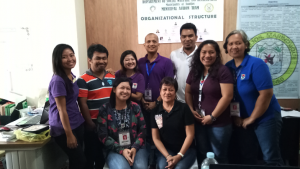 Proposals, vouchers, attendance list, reports, and articles to name a few. Any office and field-based worker knows how these can turn into a mess as soon as they start piling up on their small desk space. The boss then asks for a certain document and the employee does not know where to find it. Government records are primary sources of information thus, these must be kept and protected at any cost. Sustainable Livelihood Program in Marinduque has the right solution for it – recordkeeping.
Proposals, vouchers, attendance list, reports, and articles to name a few. Any office and field-based worker knows how these can turn into a mess as soon as they start piling up on their small desk space. The boss then asks for a certain document and the employee does not know where to find it. Government records are primary sources of information thus, these must be kept and protected at any cost. Sustainable Livelihood Program in Marinduque has the right solution for it – recordkeeping.
Sonia De Leon and Marieta Manzo, Regional Program Coordinator and Provincial Monitoring and Evaluation Officer respectively, checked and monitored all records per municipality to ensure that documents are filed, labeled, and update properly. The initiative also aimed to provide technical assistance on proper filing system to help Project Development Officers (PDOs) organize their files with efficiency and transparency. The strategy also aimed to help other staff to retrieve documents with utmost ease.

All documents received and sent outside were logged for easier tracking and monitoring. PDOs are very keen on recordkeeping as it is imperative in the government organization. Here are some techniques in recordkeeping and filing procedures:
Step 1: Receiving the document. If it is a letter or document that came through snail mail, record it in the “mail received” column and write the complete date when you received the certain type of document.
Step 2: Action. Forward the letter/document to the addressee. If there is no addressee indicated, ask the sender for necessary details.
Step 3: Follow up. Check if the letter or document has been dealt with.
Step 4: Collecting documents for filing. All documents with at least two receiving copies must be collected in a filing tray.
Step 5: Filing. Choose a regular time to file every day to avoid unnecessary piling up of documents. A convenient filing system may also be used.
Here are some techniques to maintain a good filing system:
- Keep pending documents in a clean tray. Do not leave them lying on desks or shelves to avoid misplacement.
- File documents regularly.
- Cover old files that has been worn or torn. Boxes and lever arch folders may also help hold documents properly.
- Put everything in a cabinet or drawer to avoid loss of confidential documents and prevent dusts.
Keep in mind that little things matter. Start recordkeeping now!
Contributor:
Marieta J. Manzo, Project Development Officer II-PMEO, Marinduque
![]()


